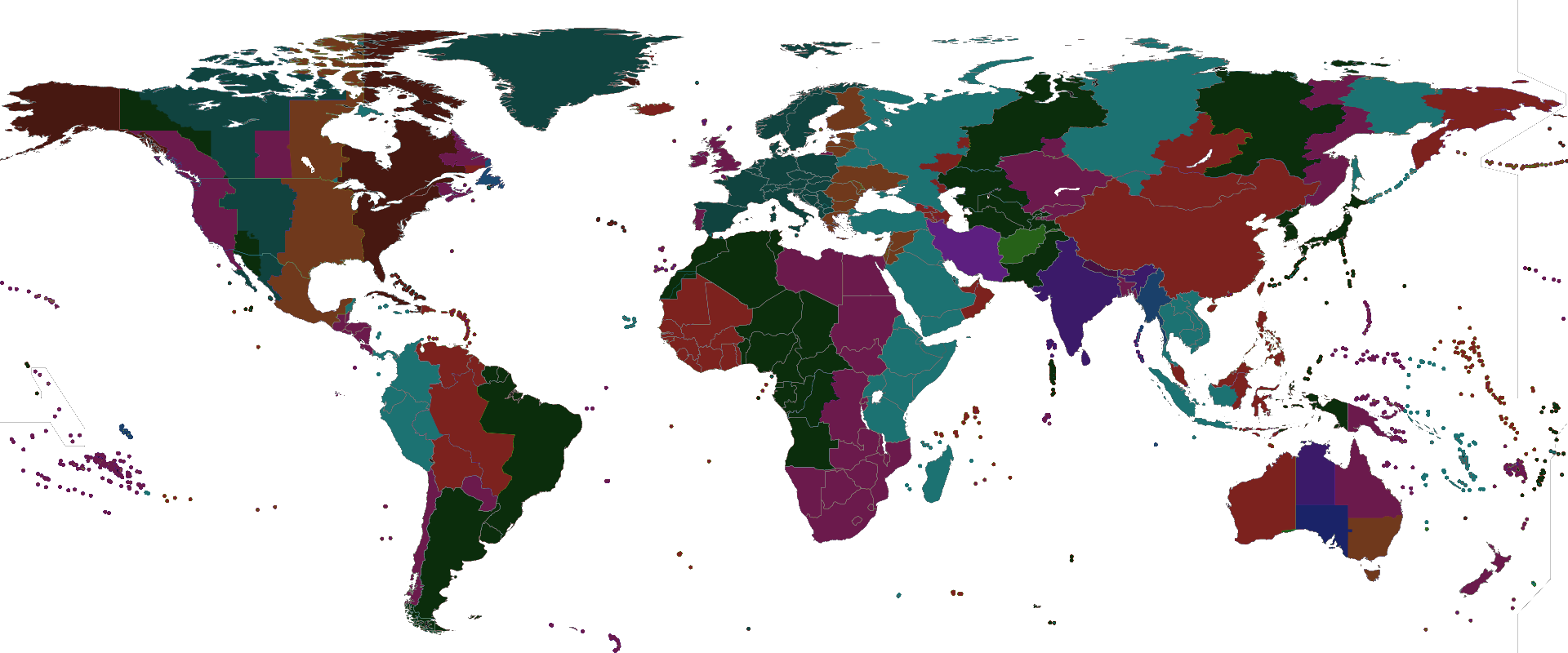[cal_eftg_tz]
Tap/click the question above to see the answer. Tap it again for the next question.
 How many time zones does Europe span? The technical answer is seven, because of the Azores and the European part (west of the Ural River) of Kazakhstan, if it is included. However, if we start in the UK (UTC and UTC+1 in summer, as all EU countries do Daylight Savings) or Iceland (UTC all the time) and continue east to Armenia and Georgia (UTC+4) it’s just four time zones.
How many time zones does Europe span? The technical answer is seven, because of the Azores and the European part (west of the Ural River) of Kazakhstan, if it is included. However, if we start in the UK (UTC and UTC+1 in summer, as all EU countries do Daylight Savings) or Iceland (UTC all the time) and continue east to Armenia and Georgia (UTC+4) it’s just four time zones.
Africa also has four time zones if we’re talking just about the continent (six time zones if we include Cape Verde on the west and Mauritius and Seychelles on the east). The same four as Europe.
The U.S. spans four time zones (five counting Alaska). Canada spans five (the same four as the main U.S. ones plus a fifth on Canada’s far eastern Maritime region.
Greenwich Mean Time is based on the mean solar time in the Royal Observatory in Greenwich, London. Greenwich Mean Time is still the name of a time zone (Western Europe), but just that time zone. That time zone and all others are defined offsets of Coordinated Universal Time, or UTC, which was originally called “railway time” and has replaced referring to all time zones in terms of an older usage of GMT. In other words, we use UTC. We only use GMT for a single time zone in UTC. That said, you’ll often see people just use “GMT,” including unfortunately our coder for some of our journalist tools (we’ll fix that when we have time).
Ideally, each time zone would be about 15 degrees of longitude, a 24-hour division of the globe. But some countries opted for a single timezone, although they span much more than 15 degrees longitude, such as China and India. Other countries use half- or quarter-hour deviations. It’s not a perfect system, but rather a decision taken by each country. Spain, Argentina and Chile chose hour-based offsets, but not necessarily those that you’d guess based on their location. Russia removed two of it’s original 11 time zones in 2010 but reinstated them in 2014.